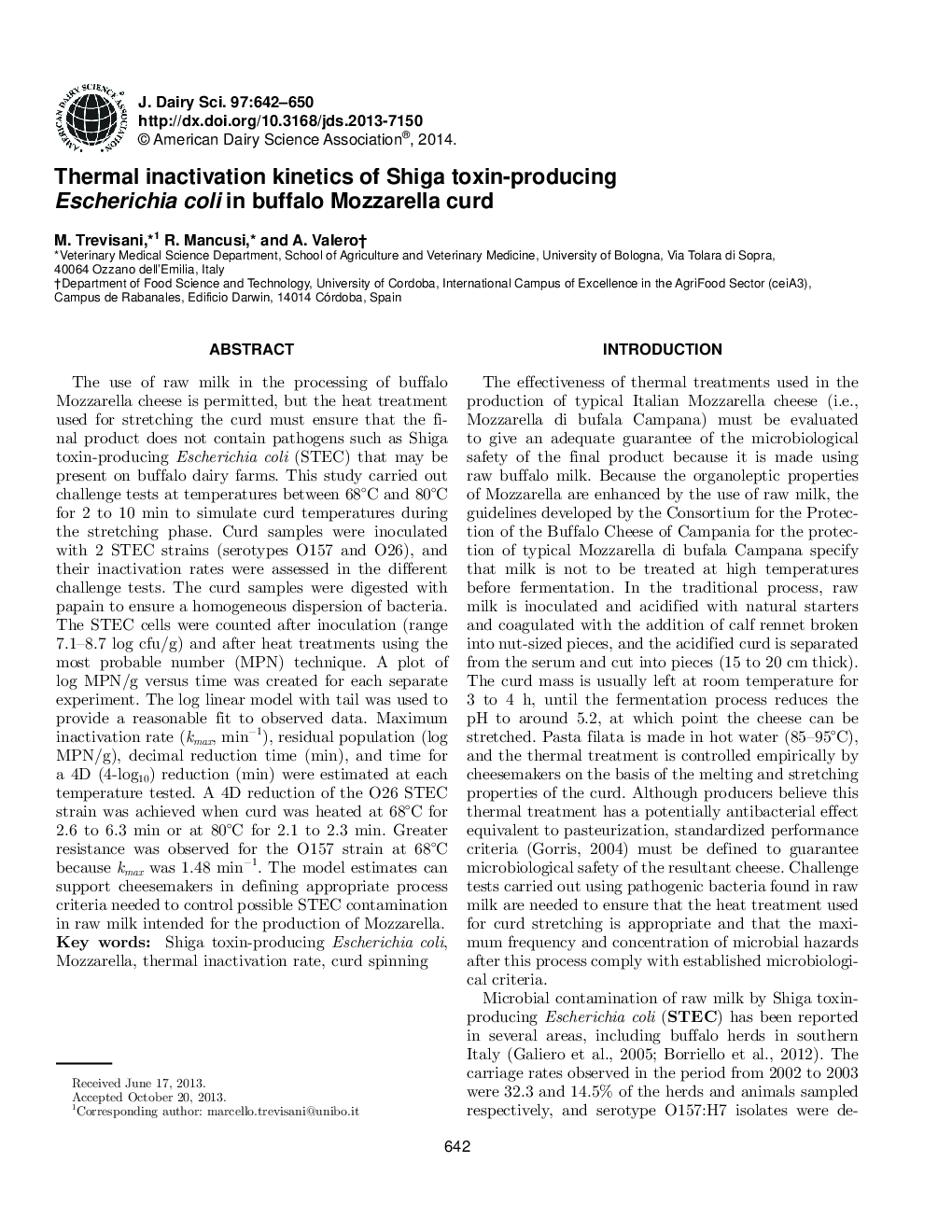| Article ID | Journal | Published Year | Pages | File Type |
|---|---|---|---|---|
| 10976980 | Journal of Dairy Science | 2014 | 9 Pages |
Abstract
The use of raw milk in the processing of buffalo Mozzarella cheese is permitted, but the heat treatment used for stretching the curd must ensure that the final product does not contain pathogens such as Shiga toxin-producing Escherichia coli (STEC) that may be present on buffalo dairy farms. This study carried out challenge tests at temperatures between 68°C and 80°C for 2 to 10 min to simulate curd temperatures during the stretching phase. Curd samples were inoculated with 2 STEC strains (serotypes O157 and O26), and their inactivation rates were assessed in the different challenge tests. The curd samples were digested with papain to ensure a homogeneous dispersion of bacteria. The STEC cells were counted after inoculation (range 7.1-8.7 log cfu/g) and after heat treatments using the most probable number (MPN) technique. A plot of log MPN/g versus time was created for each separate experiment. The log linear model with tail was used to provide a reasonable fit to observed data. Maximum inactivation rate (kmax, minâ1), residual population (log MPN/g), decimal reduction time (min), and time for a 4D (4-log10) reduction (min) were estimated at each temperature tested. A 4D reduction of the O26 STEC strain was achieved when curd was heated at 68°C for 2.6 to 6.3 min or at 80°C for 2.1 to 2.3 min. Greater resistance was observed for the O157 strain at 68°C because kmax was 1.48 minâ1. The model estimates can support cheesemakers in defining appropriate process criteria needed to control possible STEC contamination in raw milk intended for the production of Mozzarella.
Related Topics
Life Sciences
Agricultural and Biological Sciences
Animal Science and Zoology
Authors
M. Trevisani, R. Mancusi, A. Valero,
